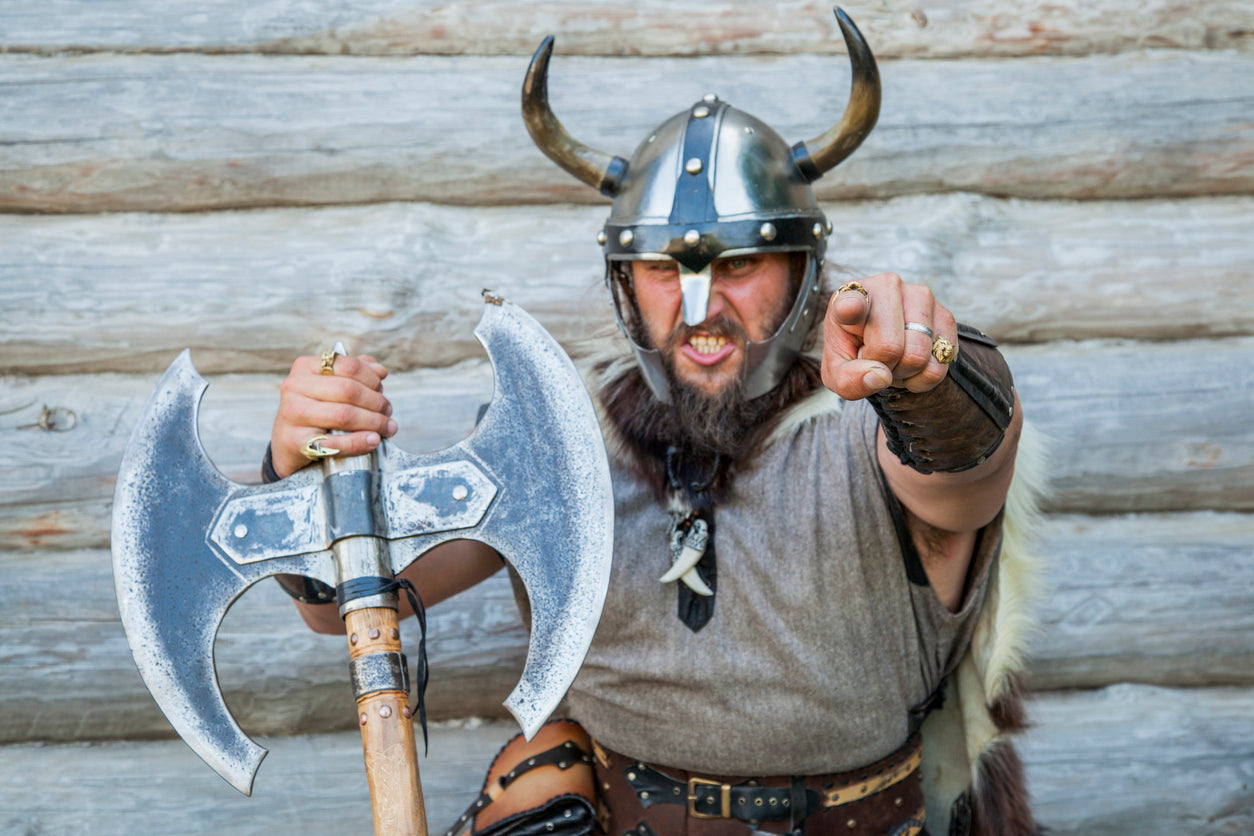The Vikings created and crafted many different types of exquisite and elaborate jewellery, including bracelets, rings, and necklaces. They used a huge variety of materials such as bronze, iron, gold, gemstones, silver, amber, and even resin for their Nordic jewellery. During the early stages of the Viking era, these adornments were relatively modest; however, as time progressed, they evolved into more intricately detailed and refined pieces.
Viking jewellery was not only used as pretty adornments but as a currency for trade. Valued for their craftsmanship and precious materials, items such as bracelets, rings, and necklaces were used as a form of currency in exchange for goods and services. Nordic jewellery frequently served as a marker of social standing, with those wearing elaborate and well-crafted pieces demonstrating a higher status in society.
Arm Rings
Arm rings were routinely worn by both Viking men and women. These metal bands, often made of silver or gold, were worn around the upper arm or wrist. The size and intricacy of arm rings varied, with some featuring elaborate engravings or motifs. Some were spiral-shaped, wrapping around the arm multiple times for a secure hold, convenient for breaking into sections during trade transactions. Others were shorter, covering about three-quarters of the arm and were preferred as currency for their plain, flat design, making them easier to break apart as needed.
Brooches
Brooches were an equally popular form of Nordic jewellery and were worn by many Viking women. They were used to fasten clothing such as cloaks or the apron dresses that they wore. These brooches, typically made of bronze, silver, or gold, often had intricate filigree, animal symbols, or geometric patterns. Viking women often wore pairs of brooches, one on each shoulder, as a further way to showcase their wealth.
Beard and Hair Rings
Wearing beard and hair rings was a customary practice among Viking men. These rings were usually woven into their facial hair and braids and were often made of silver or gold. Beard and hair rings were often intricately designed, featuring runes, patterns or motifs [1].
Necklaces and Neck Rings
Necklaces were made from various different materials, including glass beads, shells, amber, and precious metals like silver or gold. Neck rings, usually made of silver or gold, were sometimes elaborately embellished with engravings or gemstones. Necklaces often featured pendants crafted from glass beads, precious stones, resin, Baltic amber, and small metal charms. Glass emerged as the predominant material for pendant production, often manufactured in large quantities for this purpose. These pendants frequently served as souvenirs, gifts, or symbols of Nordic religious significance.
Pendant and Amulets
The Vikings wore a wide variety of amulets including including Mjolnir pendants, Valknut pendants, Yggdrasil pendants, and more. Thor's hammer pendant appears to have been the most commonly worn by ancient Norsemen, and has been found in many Viking graves. Examples of other pendants include miniature weapons like axes and arrowheads, perforated coins, depictions of the Tree of Life, crosses, and symbols such as the Valknut.
Pendants often featured beads, commonly made from amber or glass. Despite their widespread availability and affordability in modern times, archaeological findings from Viking burial sites indicate that these ornaments were scarce and only one or two were added to each pendant.
Resources:
[1] https://www.worldhistory.org/article/1388/vikings-jewelry-weapons--social-change-at-the-viki/


Share:
Viking symbols and their meaning
Unveiling the Enigmatic Splendor of Odin's Cave: A Tribute to the Timeless Legacy of the Vikings